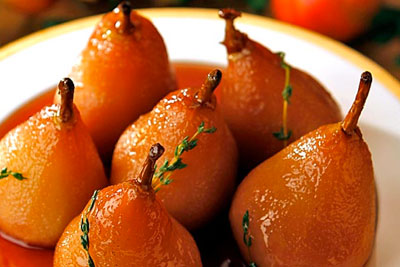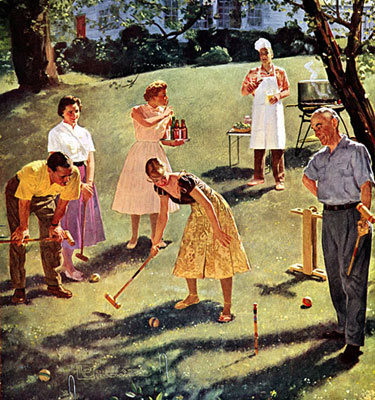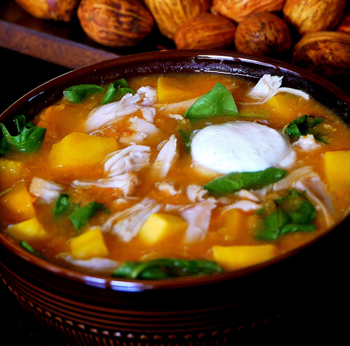 It's the same every autumn. Pears sit quietly in the wings while apples take center stage.
It's the same every autumn. Pears sit quietly in the wings while apples take center stage.
It's no wonder. Think about it. Do kids crave candied pears every Halloween? Do moms pack pear sauce in their kids' lunch boxes? Can something be as "all-American as pear pie"?
Pears are good. Some pears, such as Seckel pears – diminutive, super sweet fruits – are surprisingly good. Overall though, they just don't get the respect of apples.
When it comes to baking, however, pears blossom into something special. In fact, I have made this cardamom coffee cake with pecan streusel twice – once with apples and once with pears. You can tell which one I preferred.
Given their mild flavor, pears work beautifully with cardamom, a enticingly fragrant spice. Though a relative of ginger, cardamom has a unique flavor that is difficult to describe. It is intensely aromatic yet not overwhelming in flavor. It has notes of ginger, clove, and citrus, which is why it works so well when paired with fall fruits.
So, go ahead and give pears a little limelight.
Fall
Fall
Cream of Celeriac Soup with Herbed Crostini
 Oft unknown and underutilized, celeriac or celery root is a vegetable with white flesh and knobby light-brown skin. Its texture is not far from parsnips. Its flavor is like celery: fresh, bright, and almost citrusy. In fact they are related. The celery root grows green stems and leaves above the soil surface that look much like celery and can be used just like celery. The greens have a more pronounced celery flavor but the stems are woody and hollow like bamboo. The herb lovage, another celery cousin, is like this too. The stems can be used as straws in mixed drinks like the Bloody Mary or my take on the Tom Collins.
Oft unknown and underutilized, celeriac or celery root is a vegetable with white flesh and knobby light-brown skin. Its texture is not far from parsnips. Its flavor is like celery: fresh, bright, and almost citrusy. In fact they are related. The celery root grows green stems and leaves above the soil surface that look much like celery and can be used just like celery. The greens have a more pronounced celery flavor but the stems are woody and hollow like bamboo. The herb lovage, another celery cousin, is like this too. The stems can be used as straws in mixed drinks like the Bloody Mary or my take on the Tom Collins.
One of the most common recipes for celeriac, especially in French cuisine is céleri rémoulade, which is a slaw of mandolined or julienned celeriac dressed in rémoulade, a mayonnaise-type sauce. You will also find celeriac prepared as creamy soups or puréed side dishes that resemble mashed potatoes. Though I love céleri rémoulade, since it is now fall, I chose to prepare a classic rendition of cream of celeriac soup. The accompanying recipe for herbed crostini makes a nice complement. Serve the soup as a start to an elegant holiday dinner. The celery flavor awakens the palate in preparation for more food to come.
Spaghetti Squash Salad with Dried Cranberries and Hazelnuts
 If you've never had spaghetti squash before, you're in for a surprise. It's called spaghetti squash for a reason—the vegetable's flesh resembles strands of spaghetti after it has been scraped away from the skin. With a mild sweet flavor, spaghetti squash pairs well with just about any dish and can be flavored in just about any way.
If you've never had spaghetti squash before, you're in for a surprise. It's called spaghetti squash for a reason—the vegetable's flesh resembles strands of spaghetti after it has been scraped away from the skin. With a mild sweet flavor, spaghetti squash pairs well with just about any dish and can be flavored in just about any way.
Once you've roasted the squash, the flavor customization is up to you. One of my favorite ways to enjoy it is simply seasoned with salt and pepper and drizzled with olive oil. It's great as a base for meatballs. But this recipe goes a few steps further and includes some fall favorites, like dried cranberries and toasted hazelnuts. Enjoy it as an appetizer salad served warm or a cold side.
Now is the season for spaghetti squash. You'll find it sold among the other winter squashes, like butternut and acorn, in the market. Pick one up and make this super simple recipe. It's easy enough to make even on a busy weeknight.
The Surprising Bartlett Pear
 We make a lot of fuss over heirloom peach varieties that date back to the 1960s and tomatoes that go back as far as the 1930s. But did you know that the Bartlett pear, that standard grocery store fruit, actually dates back to the 1770s? The Bartlett, called the Williams pear in England where it was first found, gets its name from Enoch Bartlett, who was the first person to sell the trees in the U.S. in the early 1800s.
We make a lot of fuss over heirloom peach varieties that date back to the 1960s and tomatoes that go back as far as the 1930s. But did you know that the Bartlett pear, that standard grocery store fruit, actually dates back to the 1770s? The Bartlett, called the Williams pear in England where it was first found, gets its name from Enoch Bartlett, who was the first person to sell the trees in the U.S. in the early 1800s.
"Barts" are the predominate pear grown in California, and there are two growing sites with very different fruit. The earliest pears were harvested in August around the Sacramento delta area. They are fine, but the ones being picked about now from the hilly orchards of Lake and Mendocino counties are much better.
How to choose: The best perfectly ripened Bartlett pears will be golden and fragrant and will have a slight softness at the neck. Don't worry if the fruit shows some russeting -- that's only skin-deep and doesn't affect the flavor.
Grilled Plum Salad with Brandy Mint Vinaigrette
 I love plums. Love them. They are so versatile, good both savory and sweet. I also love a good salad and am always willing to try something new in this arena as well.
I love plums. Love them. They are so versatile, good both savory and sweet. I also love a good salad and am always willing to try something new in this arena as well.
The key to a decent dressing is good olive oil. There is no question it elevates the salad to new heights. It can also mercilessly drag it down when not up to par. A good extra-virgin olive oil is key to this Grilled Plum Salad with Brandy-Mint Vinaigrette. The ingredients are few, so quality matters.
When I made the dressing, I sort of felt like it needed something else, another flavor. But then I stepped back and looked at the other ingredients going into this salad; bacon, grilled plums, goat cheese, toasted pecans and peppery arugula. I decided to hold off adding anything and I’m glad I did.
This salad exploded with flavor. A bite with plum, cheese, arugula, nut and vinaigrette….yum. However, it’s definitely a grown up salad with the brandy addition. The perfect starter for a special dinner.
Try it for yourself when you have some time.
More Articles ...
Welcome to the new One for the Table ...
Our Home Page will be different each time you arrive.
We're sure you'll find something to pique your interest...


